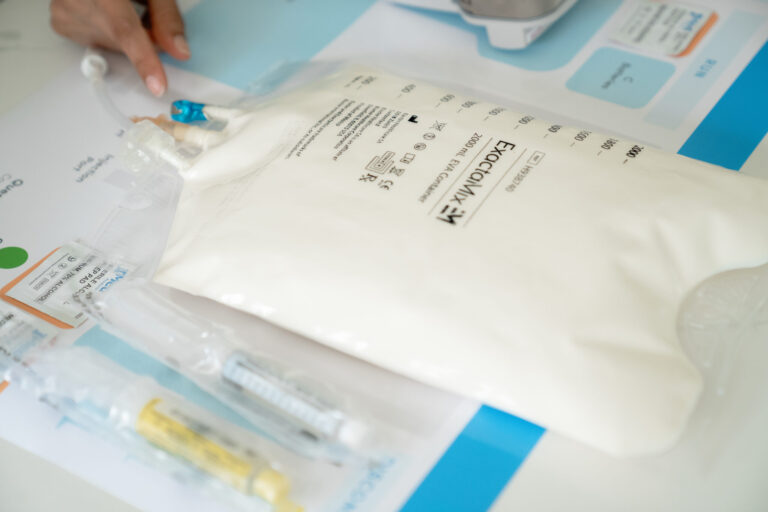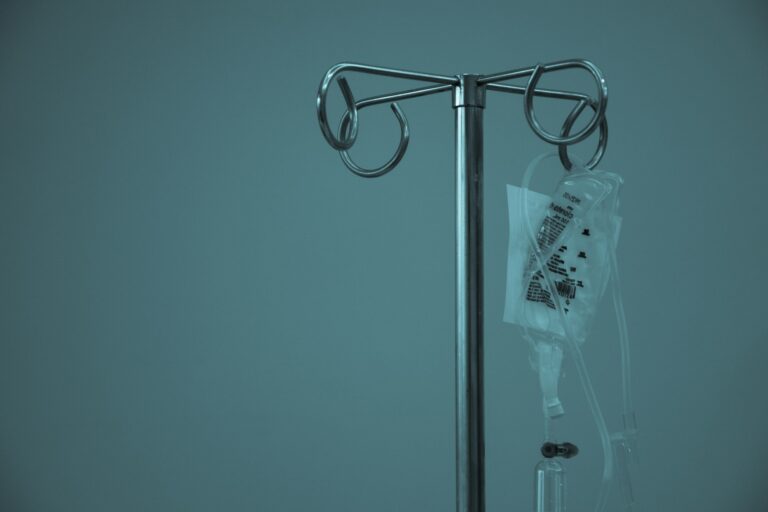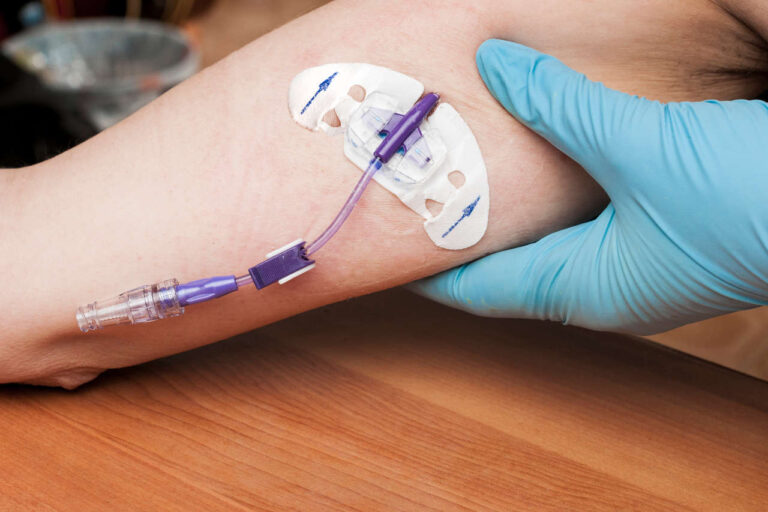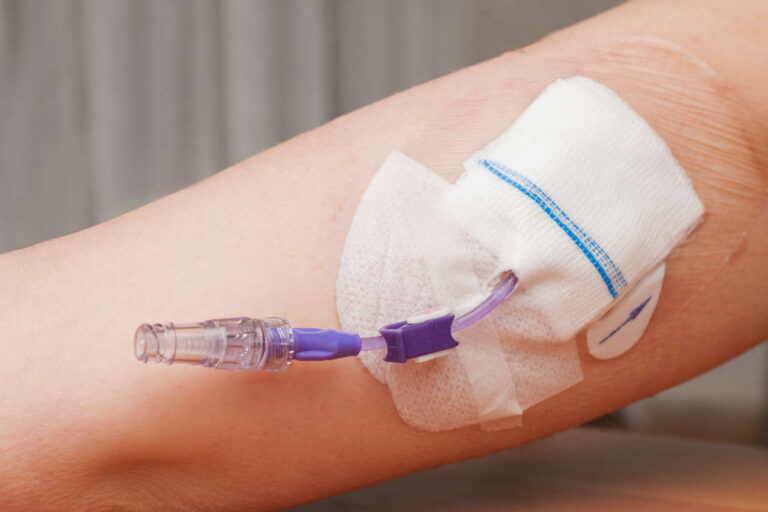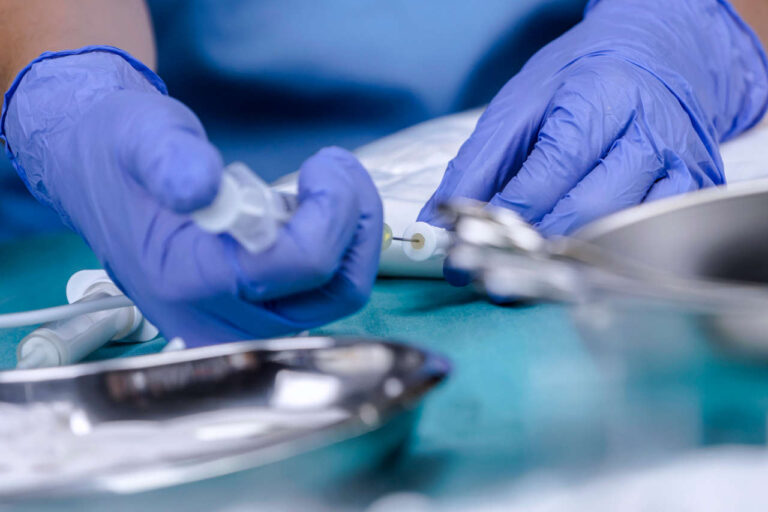
完全肠外营养(TPN)TPN输注疗法是一项于20世纪60年代引入的成熟医疗干预措施,在挽救生命方面发挥着关键作用。该疗法旨在将重要营养物质直接输送到患有严重胃肠道疾病或接受过大型肠道手术的患者血液中,导致其消化系统无法有效吸收或处理食物。虽然TPN在提供必需营养以促进康复和提升整体健康方面发挥着关键作用,但它也存在潜在的风险和并发症。其中,最值得关注的是肝损伤的可能性,在严重情况下甚至可能导致肝功能衰竭,尤其是在接受长期TPN治疗的患者中。
始终有货
静脉输液库存齐全,随时为您服务您可能已经知道,肝脏作为承担营养物质处理关键任务的器官,至关重要。然而,当人体正常的消化过程被干扰时,可能会对肝脏造成有害的后果。
在本文中,我们将探讨TPN基因与肝损伤之间的关联,分析肝损伤的可能原因,并提出一些措施来减少其对这一重要器官的潜在损害。深入了解TPN基因突变将有助于您或您的亲人以最安全、最有效的方式长期管理TPN治疗。
TPN如何导致肝损伤?
通常,肝脏在营养物质(包括葡萄糖、氨基酸和脂肪)的代谢中起着至关重要的作用。通过TPN将这些营养物质直接输送到血液中,绕过了肝脏,导致这一重要器官的代谢负担增加。这种代谢负荷的增加有可能诱发肝损伤,尤其是在肝脏已经受损的情况下。
接受长期全肠外营养 (TPN) 治疗的患者面临更高的罹患特定肝脏并发症的风险,这些并发症被称为肠外营养相关肝病 (PNALD)。PNALD 涵盖一系列肝脏问题,包括脂肪变性(脂肪肝)、 胆汁淤积 (胆汁流动中断)、葡萄糖和脂质代谢中断、肝硬化(肝脏瘢痕形成)、门静脉高压(肝脏血压升高),最终导致肝功能衰竭。
婴儿PNALD发病率显著高于成人,婴儿发病率为40%~60%,成人发病率为15%~40%。且随着TPN持续时间的延长,PNALD的发病率也随之升高。
导致肝损伤的因素
长期使用 TPN 的患者可能会因与该疗法相关的多种因素而出现肝损伤或 PNALD。长期服用 TPN 的患者肝损伤的主要风险因素包括:
TPN溶液的组成
TPN溶液的成分起着至关重要的作用。高血糖、氨基酸和脂肪水平会超出肝脏正常代谢这些营养物质的能力,久而久之会导致肝功能障碍。 一项前瞻性研究 报道称,接受过量脂质(>1 g/kg)的成年患者患有 TPN 相关肝病。
胆汁淤积——最常见的肝损伤形式
胆汁淤积症是外周性胆管炎 (PNALD) 的一种,是由于肝脏胆汁流动中断,导致胆汁在肝脏中积聚而发生的。胆汁积聚会引起炎症和肝细胞损伤,最终导致肝功能障碍。
虽然接受TPN治疗的成年人也可能出现胆汁淤积,但其在早产新生儿中最为常见。事实上,胆汁淤积是肝功能衰竭最常见的症状,预计超过70%的长期接受TPN治疗的成年患者会出现胆汁淤积。
胆汁淤积的症状包括黄疸(皮肤和眼睛发黄)、尿液颜色变深以及粪便颜色变浅。这些症状表明肝功能受损,胆汁在肝脏中积聚。
感染
长期服用 TPN 的患者发生感染的风险增加,包括血液感染(败血症)。一项研究表明, 脓毒症发作后患 PNALD 的风险增加 3.2 倍。这些感染会直接影响肝脏并导致肝损伤。
热量超载导致营养毒性
TPN溶液的成分可能有害,因为它可能导致热量超载,并含有可能有毒的成分。无论如何补充营养,过量喂养或过度喂养都可能导致肝脂肪变性(脂肪肝)和肝炎(肝脏炎症)。
例如,高水平和某些类型的脂质(脂肪)可能导致 肝脂肪变性当TPN含有过量脂质时,肝脏可能难以充分代谢和消化它们。这会导致脂肪在肝细胞内堆积,从而引发肝脏脂肪变性和肝损伤。
TPN 期间更容易发生肝脂肪变性,原因是长期使用 TPN、TPN 溶液中的葡萄糖水平升高、胰岛素抵抗以及存在肥胖或糖尿病等潜在疾病。
营养缺乏
即使接受TPN治疗,患者仍可能缺乏某些营养素。这些营养素缺乏会进一步影响肝脏健康,并导致肝脏损伤。这些营养素不足甚至会对肝脏健康造成更大的影响,并导致肝脏疾病。例如,长期服用TPN的患者血液中胆碱含量可能较低,这与肝酶异常有关。因此,胆碱缺乏是TPN相关肝病发展的关键因素,据称胆碱是长期在家服用TPN的患者所需的重要营养成分。
此外,值得注意的是,并非所有接受长期TPN治疗的患者都必然会出现肝损伤或肝衰竭。虽然肝脏并发症是已知风险,但发生的可能性和严重程度可能因个体因素和TPN治疗的合理管理而异。
与专家交谈
关于共付额援助如何预防肝损伤?
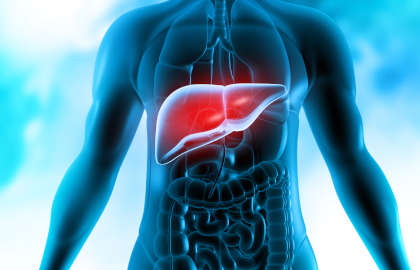
预防TPN引起肝损伤的最有效策略之一是以平衡的方式提供营养,模仿人体的自然过程。由于肝脏以受控和受调控的方式处理葡萄糖,因此调节通过TPN给药的葡萄糖量对于避免肝脏负担过重至关重要。
通过 TPN 注射的脂肪种类和数量是另一个关键因素。虽然脂肪是必需的营养素,但过量摄入会损害肝脏。因此,必须为患者提供适当比例的 Omega-3 和 Omega-6 脂肪酸,并定期检查其血脂水平。
同样,通过TPN保持适当的氨基酸平衡对于避免肝脏蛋白质负荷过重至关重要。此外,某些氨基酸,例如谷氨酰胺,已被证明可以降低TPN造成的肝损伤风险。
因此,密切监测肝功能、定期评估和调整 TPN 配方有助于最大限度地降低风险并有效控制潜在的肝脏并发症。
结论
TPN 本质上是一种医疗干预措施,通过静脉导管将重要营养物质直接输送到血液中。然而,长期使用 TPN 可能会导致肝损伤或肝功能衰竭。通过积极主动地认识并应对这些风险,可以降低肝脏问题发生的可能性。密切监测肝功能并与医疗专家保持密切合作,对于及早发现问题并确保最佳治疗方案至关重要。
参考:
- Jain, A., & Teckman, J. (2014).全肠外营养相关肝损伤的新发现机制。 肝病学进展(在线), 2014, 1–7. https://doi.org/10.1155/2014/621380
- Żalikowska-Gardocka, M. 和 Przybyłkowski, A. (2020)。肠外营养相关肝病的回顾。 临床与实验肝病学, 6(2), 65–73。https://doi.org/10.5114/ceh.2019.95528
- Chan, S., McCowen, KC, Bistrian, BR, Thibault, A., Keane-Ellison, M., Forse, RA, … & Burke, P. (1999).接受家庭全肠外营养的患者终末期肝病的发病率、预后和病因。 外科手术, 126(1), 28-34。https://doi.org/10.1067/msy.1999.98925
- Bellamy, C., & Burt, AD (2018). 肝脏与全身疾病。 爱思唯尔电子书 (第 966-1018 页)。https://doi.org/10.1016/b978-0-7020-6697-9.00015-7
- Raman, M., & Allard, JP (2007).成人肠外营养相关肝胆疾病。 应用生理学、营养学和代谢, 32(4), 646–654。https://doi.org/10.1139/h07-056

